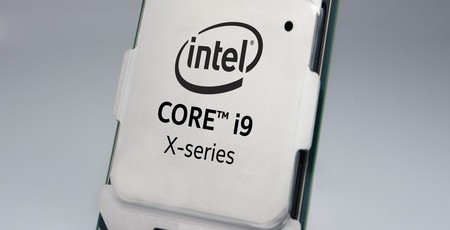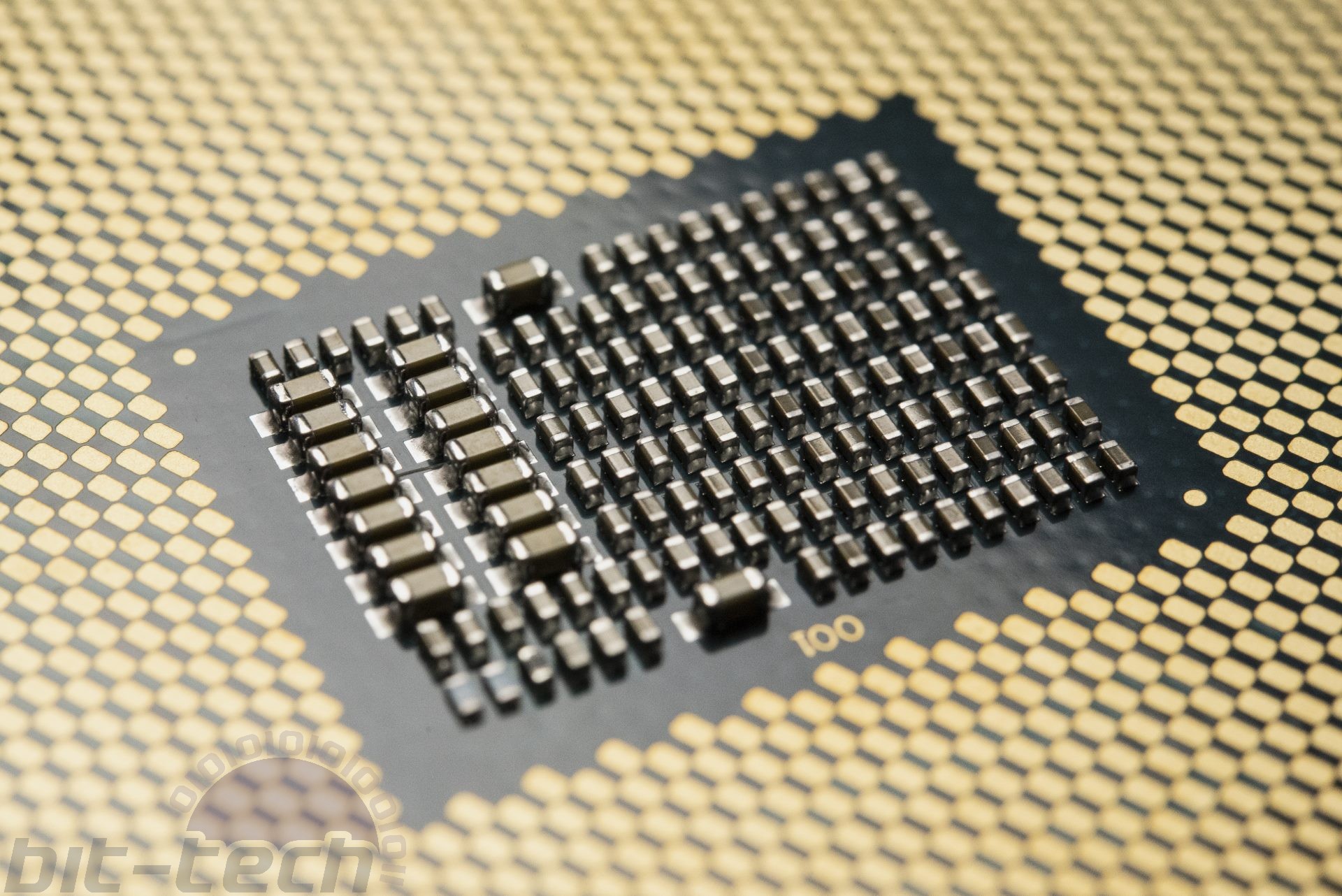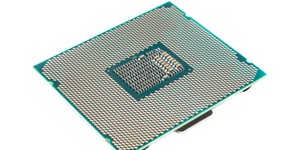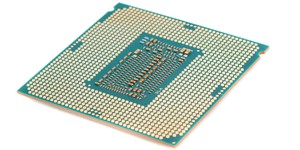
Manufacturer: Intel
UK price (as reviewed): £2,269.99 (inc. VAT)
US price (as reviewed): MSRP $1,979 (exc. tax) (tray price only; retail MSRP TBC)
While there was a bruising fight between AMD and Intel's mainstream CPUs last year, things were equally interesting at the high-end with AMD first clinching the performance and core-count crowns with the surprise Threadripper 1950X and Intel responding just as unexpectedly with a massive barrage of high-end desktop CPUs, including the mighty Core i9-7980XE. Some aspects of the new range seemed quite illogical next to Threadripper, e.g. limiting the full 44 PCIe lane count to the expensive Core i9-7900X, but Intel's pricing was much lower than the previous generation - undoubtedly a direct result of the new competitive pressure.
There was also the fact that there were odd four-core and six-core CPUs in this line-up, which were matched or bettered in performance a short while later when Coffee Lake landed for mainstream users - all this despite Intel claiming that the high-end was primarily for content creators. It also made the widely unpopular move of following what it had done with Ivy Bridge CPUs on the desktop - ditching solder for thermal paste as the interface material between core and IHS.

With the new 9th generation (yes, we're skipping a generation too), Intel is looking to remedy a lot of these things, so as well as reviewing the Core i9-9980XE today, we'll also give a bit of background on these new features as well as changes Intel has made to its HEDT product stack. For starters, as with all K-series 9th generation CPUs, the new Core X-series CPUs will all sport solder as their thermal interface material, so, one hopes, the days of praying to the gods and sacrificing some small furry animals as you delid your Core i9-7980XE are hopefully behind us (err, Ant, have you seen my pet rabbit? - ed.). Intel is also making the maximum 44 PCIe lanes available right the way down the stack.
That stack now starts at the bottom with the Core i7-9800X, which has two more cores compared to the Core i7-7800X, with eight versus six. The downside, though, is that the 8c/16t Core i7-9800X is currently retailing for close to £700, making it around £150 more than the 8c/16t Core i9-9900K, which also has a far cheaper platform cost, albeit with fewer PCIe lanes and memory channels. We also fail to see why it's a core Core i7 and not a Core i9 seeing as it sports Hyper-Threading and has more PCIe lanes than the Core i9-9900K, but it's often easier to grasp quantum mechanics than it is to understand hardware naming strategies.
| Core i9-9980XE | Core i9-9960X | Core i9-9940X | Core i9-9920X | Core i9-9900X | Core i9-9820X | Core i7-9800X | |
| Base Freq | 3 | 3.1 | 3.3 | 3.5 | 3.5 | 3.3 | 3.8 |
| Max Freq | 4.5 | 4.5 | 4.5 | 4.5 | 4.5 | 4.2 | 4.5 |
| Cores/threads | 18/36 | 16/32 | 14/28 | 12/24 | 10/20 | 10/20 | 8/16 |
| Core | Skylake-X refresh | Skylake-X refresh | Skylake-X refresh | Skylake-X refresh | Skylake-X refresh | Skylake-X refresh | Skylake-X refresh |
| TDP | 165W | 165W | 165W | 165W | 165W | 165W | 165W |
| L3 Cache | 24.75 | 22 | 19.25 | 19.25 | 19.25 | 16.5 | 16.5 |
| Lithography | 14nm | 14nm | 14nm | 14nm | 14nm | 14nm | 14nm |
| PCIe lanes | 44 | 44 | 44 | 44 | 44 | 44 | 44 |
| Launch price | $1,979 | $1,684 | $1,387 | $1,189 | $989 | $889 | $589 |
| Core i9-7980XE | Core i9-7960X | Core i9-7940X | Core i9-7920X | Core i9-7900X | Core i7-7820X | Core i7-7800X | |
| Base Freq | 2.6 | 2.8 | 3.1 | 2.9 | 3.3 | 3.6 | 3.5 |
| Max Freq | 4.4 | 4.4 | 4.4 | 4.4 | 4.5 | 4.5 | 4 |
| Cores/threads | 18/36 | 16/32 | 14/28 | 12/24 | 10/20 | 8/16 | 6/12 |
| Core | Skylake-X | Skylake-X | Skylake-X | Skylake-X | Skylake-X | Skylake-X | Skylake-X |
| TDP | 165W | 165W | 165W | 140W | 140W | 140W | 140W |
| L3 Cache | 24.75 | 22 | 19.25 | 16.5 | 13.75 | 11 | 8.25 |
| Lithography | 14nm | 14nm | 14nm | 14nm | 14nm | 14nm | 14nm |
| PCIe lanes | 44 | 44 | 44 | 44 | 44 | 28 | 28 |
| Launch price | $1,999 | $1,699 | $1,399 | $1,199 | $999 | $599 | $389 |
The rest of the stack is roughly where we left it with the original 7000-series Skylake-X generation, though, with 10-,12-,14-,16-, and 18-core models, and the somewhat confusingly-named Core i9-9900X (note the X and not a K) has 10 cores - the same as the Core i9-7900X. However, there have been some sizeable changes in cache amounts. We spoke about cache restructuring with our initial Skylake-X coverage, explaining how and why a bigger L2 cache and smaller L3 cache could improve performance, and we saw the results in the match between the Core i7-6950X and Core i9-7900X - both 10-core CPUs but using very different cache structures. With those first Skylake-X CPUs, Intel employed a split of high core count and low core count dies as you moved from the 18-core Core i9-7980XE down to the Core i7-7800X, but that's changed now (more in a moment), meaning that everything from 12 cores down sees a big increase in L3 cache.

This is because Intel s now using high core count dies across the entire range of new 9th Gen HEDT CPUs - essentially every CPU is now an 18-core high core count die but with a certain number of cores disabled (that number being 0 for the CPU we're reviewing today). As a result, the Core i7-9800X, for example, has a massive 16.5MB L3 cache, which is twice as much as its predecessor and more than Intel's previous 12-core CPU. This might only match the mainstream Core i9-9900K, but the Core X-series HEDT eight-core has four times the amount of L2 cache as well, so it's highly likely it will offer more performance
So, there are interesting tweaks to the stack up to the 12-core model, but above this we're only seeing frequency boosts, so unlike 2017 there's no dramatic shift upwards in core counts and little to get excited about save the reintroduction of solder and those higher clock speeds.

MSI MPG Velox 100R Chassis Review
October 14 2021 | 15:04








Want to comment? Please log in.